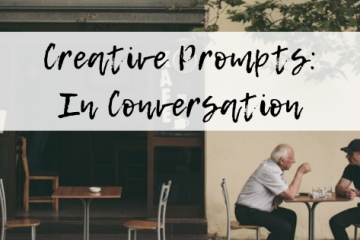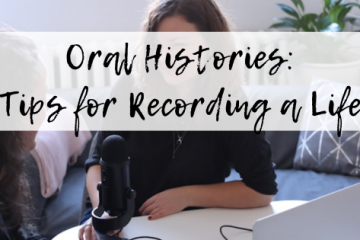
It is my great pleasure to welcome Perth-based author and journalist Carrie Cox to Treefall Writing this week.
As a journalist, Carrie’s column, ‘Carrie On’ was syndicated across six newspapers for a decade, and she wrote two non-fiction books before turning to fiction. Her debut novel, Afternoons with Harvey Beam, was published in 2018, and her latest, So Many Beats of the Heart is out now.
Carrie and I previously shared the same publisher, and I have often found myself laughing at her humorous posts on Instagram, but we only met in person earlier this year, when she joined the team at Writing WA (where I work part-time).
Whether you’re a writer or a reader, I hope you’ll enjoy this conversation, which includes the story of a grandmother who plants the seeds of storytelling, the creative inspiration and process behind So Many Beats of the Heart, and Carrie’s advice to her 12-year-old self.
Writing
How did you discover that writing was something you wanted to do/loved doing?
My late grandmother was pivotal in planting the storytelling seed within me. She was, among many things, a volunteer at the local library and she would often take me with her on her shifts. While she was re-shelving books, I would be immersing myself in as many stories as I could. The fact of being surrounded by them in one place was tremendously inspiring to me (and l still adore libraries).
Grandma also gave me my first ever journal when I was about eight, which I started to fill with accounts of daily events. I quickly realised that much of daily life is actually pretty dull, so I began to embellish my diarising to make it more interesting for an imagined reader. I guess that’s where it all began.
Where do you write and how often?
The answer to this question has changed with each book. I wrote my first novel in my local library – the writing just seemed to flow better in that setting and I enjoyed all the background noise and colour of a busy community library.
For the second book, I wanted a different setting to get my head into a new story, so I did most of it at my friend’s co-working space. Again, I was after background noise and colour, still afraid that to write at home on my own in silence would somehow kill all creativity (I’d be able to feel the presence of my ironing pile).
When I started writing the third book, my current project, I was lucky enough to secure a two-week residency at KSP Writers’ Centre and that experience taught me that I can write in solitude and silence (in fact I wrote more in those two weeks than I ever have before), so I am starting to write more at home now.
When I’m in the flow, I try to write every day (always in the mornings for about 3-4 hours), but when life and paid work get in the way, I can leave my writing untouched for weeks and start to get quite panicky about it.
What keeps you writing?
That’s a good question. I seldom reflect on that, but I should. I think that because I’ve been doing it for so long now (as a journalist first and more latterly as an author) that I don’t really know myself in any other mindset. I don’t know how else I could satisfy the need in me to find stories and tell stories. It’s how I’ve always made sense of things and the way I best connect with people. I picture everything in words and descriptions – the neurons in my brain are swimming in text. I guess writing delivers me understanding and connection in the same way music does for many people.
What do you do when you don’t feel like writing?
I squander way too many hours looking at my phone, switching between social media platforms, disappearing into echo chambers of political discussion, playing mindless games and quietly hating myself for all of it.
So Many Beats of the Heart

What was the motivation and/or inspiration behind So Many Beats of the Heart?
A few years ago within my social circle there were a string of painful marriage break-ups, one after the other in quick succession. My own marriage was a little wobbly at the time. The break-ups were all for different reasons, but the common factor was the vintage of those relationships: 15-25 years of marriage. I found that really curious – on paper, these relationships were under fewer pressures than the early years of babies and toddlers and nascent careers. What was going on here?
I became fascinated with the role of time: instead of it forming a solid foundation under these couples, it had become a weight above them. I became equally fascinated with the various challenges and insights posed by ‘middle age’. Is it even reasonable, I wondered, to expect that two people might keep moving through space and time at similar rates and arrive in middle age wanting the same things? Are the couples who do stay together beyond midlife actually happy? Anyway, all of this became a preoccupation for me and so inevitably a book project would follow.
How much did you plan/plot this novel, and how much of it emerged as you wrote?
For each of the three novels I’ve embarked upon, I’ve had about a 60% idea of where I was headed from the start (certainly 100% in terms of the themes and questions but 60% in terms of the narrative) and the rest comes organically out of the writing process. With each book, I’ve become more confident that the writing process itself will deliver everything else I need to get to the end. It’s the only kind of ‘magic’ I trust in.
Which character did you have the most fun creating/writing the most? Why?
Definitely Ronni. She started out as a small character based on a dear friend of mine, Maria, but quickly grew into a main character. That evolution was partly because she was so fun to write and partly because I quickly saw how much Evie needed an irreverent friend to help get her through her shock and grief.
My friend Maria is genuinely one of the funniest people I’ve ever met, often unintentionally. She is bold and outrageous and fiercely protective of her family and friends. She’s the person you want on your side in a battle.
When I told Maria how the character based on her was evolving during the writing process, she was absolutely thrilled. That gave me the confidence and joy to keep writing her into the story – many of Ronni’s one-liners are actually things Maria has said.

Which character is least like you? Why?
This may surprise some people but it’s actually Evie, the central character. Whereas I strongly identified with the main protagonist in my first novel, Harvey Beam (to the point where my eldest said Harvey was just ‘you with a penis’), I didn’t gel with Evie until late in the writing process.
To be honest, I don’t think I’d wait as long as she did to demand answers from Hamish. I probably would have high-tailed it on a plane back to Perth, found a lawyer, lent on all my old friends and kicked him to the kerb.
One of your characters is a wheelchair user (James) and another is from a migrant background (Ronni)—how did you ensure authentic, nuanced representation when this is not your personal experience?
I did it with a great sense of responsibility, an enormous amount of research (mostly in-person interviews) and the final oversight of a sensitivity reader. Two of the most helpful and authoritative people who helped me in my research – relationships counsellor Karen Anderson and disabled sailor Mike Rowney – each read the final manuscript to ensure my representations were fair, authentic and ultimately helpful.
One reviewer has commented that So Many Beats of the Heart is ‘not a book that delves into despair – it’s uplifting with plenty of banter and wit’. Where does your humour come from?
Humour has always been my coping mechanism. Whenever I wade close to darkness, I instinctively seek light in humour. I completely understand and respect gallows humour and I think the right dose of irreverence can work like a balm against chaos.
What do you hope will stay with readers once they’ve finished reading So Many Beats of the Heart?
I really wanted the takeaway to be a sense of hope that on the other side of heartbreak and turmoil, unexpected and beautiful things await: new experiences, new people and a new chapter. You can’t see them when you’re in the depths of pain, but you have every right to believe they’re there.
How similar or different was the writing process of So Many Beats of the Heart to your previous books, and which of the three was the most challenging to write?
This second novel was absolutely much harder to write than the first because I’d quit a full-time job to write it and therefore put a lot of pressure on myself to finish it and finish it quickly. Compounding matters, my husband lost his job two weeks after I began writing it, so I also had considerable financial worries perched on my back whenever I sat in front of the computer and tried to conjure creativity.
I treated this writing process in a much more job-like fashion and while that can be helpful in terms of productivity, it’s not necessarily the right fit for creativity. I would like to think the third novel, which I’m currently still writing, is a process somewhere between my previous two experiences – productive enough to still let the joy in.
What’s next?
I was lucky enough to get a two-book deal with Affirm Press, so I’m currently working on the next novel, the tagline of which is “A novel about beauty, vulnerability and the healing power of storytelling”.
A Few of Your Favourite Things
Who inspires or has made a difference in your life and why?
I’m inspired by other authors and storytellers. Their stories inform my own approach to writing and constantly help me make sense of the complicated narrative that is life itself.
If you could write a letter to your 12-year-old self, what would you say to her?
It’s not a race, Carrie. Stop running across the top of everything. But also don’t wait until you’re 40 to start writing your first novel.
What book has had a lasting impact on you and why?
A Tree Grows in Brooklyn by Betty Smith was the first novel I read that made me sit back in awe and wonder and snotty tears at the power of storytelling. Sadly, it was the only book Betty wrote (to my knowledge). A few years ago I took along a copy of the book to re-read in New York Public Library and that day is still one of my favourite memories.
Any final words for other creatives?
The best advice anyone ever gave me about writing is “It’s a game of inches”.




